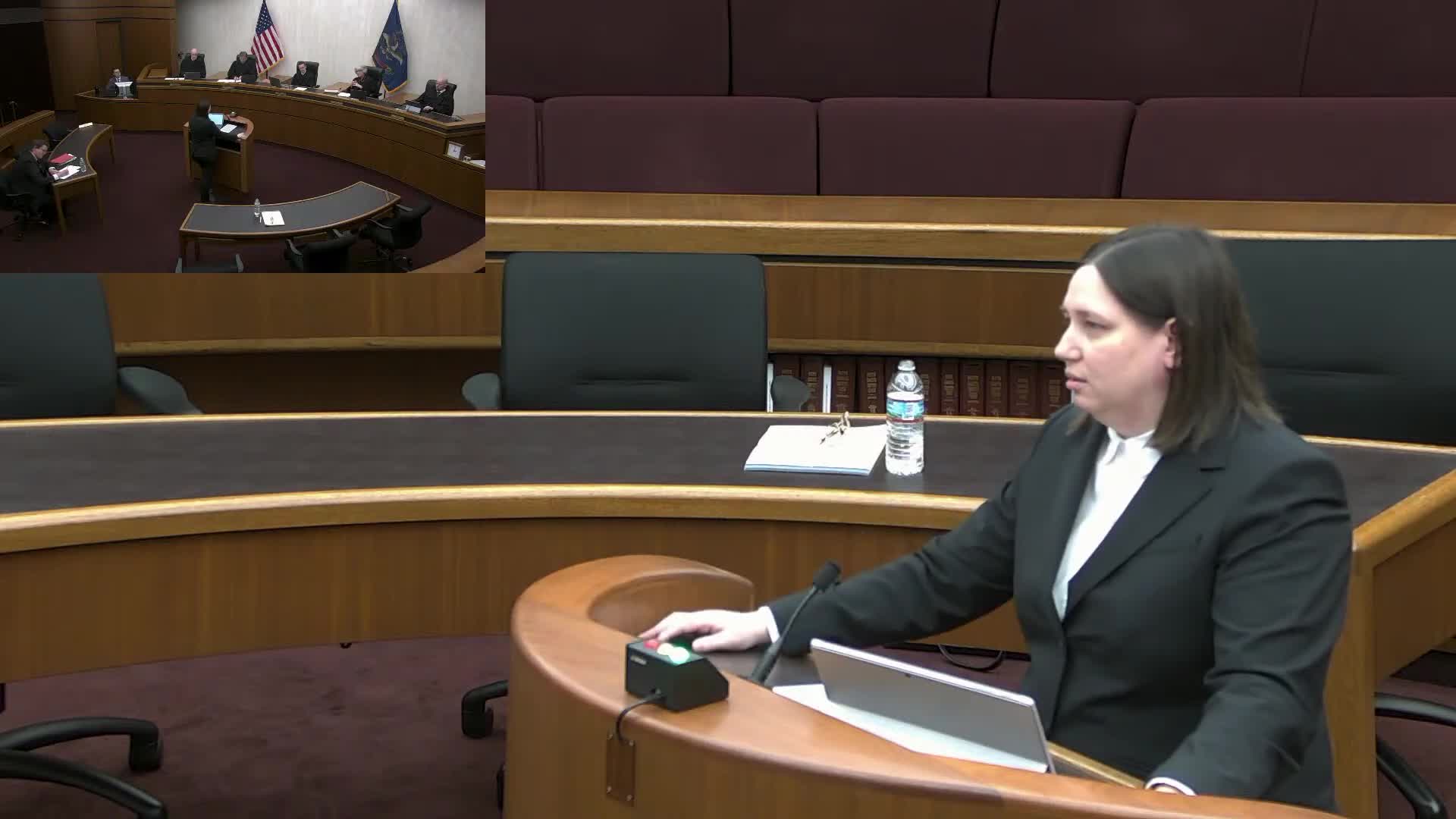Logan Simons argues case in North Dakota drug possession appeal
January 11, 2025 | Supreme Court , State Agencies, Organizations, Executive, North Dakota
This article was created by AI summarizing key points discussed. AI makes mistakes, so for full details and context, please refer to the video of the full meeting. Please report any errors so we can fix them. Report an error »

In a recent session of the North Dakota Supreme Court, the case of State v. Henderson was discussed, focusing on the complexities of constructive possession in drug-related offenses. The arguments presented highlighted the nuances of legal definitions and the evidentiary standards required for conviction.
The case revolves around the defendant, Mr. Henderson, who was charged with possession of drug paraphernalia and a firearm. A significant point of contention was whether Henderson had constructive possession of the items found during a search of a residence where he was not present at the time. His attorney argued that the evidence presented was insufficient to establish that Henderson had dominion and control over the paraphernalia, as multiple individuals had access to the location where the items were discovered.
The defense emphasized that the state could not definitively prove who possessed the items, noting that four individuals were listed in connection with the paraphernalia. The argument was made that the mere presence of mail and personal items in the residence did not conclusively link Henderson to the drugs or the firearm, especially since he was away attending a funeral when the search occurred.
On the other hand, the state's attorney countered that there was sufficient evidence to support the jury's findings. They pointed to various items found in the residence, including clothing and hygiene products, as indicators of Henderson's presence and control over the space. The state argued that the jury could reasonably infer Henderson's knowledge and control over the paraphernalia based on the evidence presented, including phone calls made from jail where he referenced specific locations within the home.
The discussions during the court session underscored the legal principle that constructive possession does not require physical presence at the time of discovery. Instead, it hinges on the totality of circumstances, including the ability to exercise control over the items in question.
As the court deliberates on the sufficiency of the evidence, the outcome of this case could have broader implications for how constructive possession is interpreted in North Dakota, particularly in cases involving multiple potential possessors. The decision will likely clarify the standards for establishing possession in similar future cases, impacting both defendants and law enforcement practices in the state.
The case revolves around the defendant, Mr. Henderson, who was charged with possession of drug paraphernalia and a firearm. A significant point of contention was whether Henderson had constructive possession of the items found during a search of a residence where he was not present at the time. His attorney argued that the evidence presented was insufficient to establish that Henderson had dominion and control over the paraphernalia, as multiple individuals had access to the location where the items were discovered.
The defense emphasized that the state could not definitively prove who possessed the items, noting that four individuals were listed in connection with the paraphernalia. The argument was made that the mere presence of mail and personal items in the residence did not conclusively link Henderson to the drugs or the firearm, especially since he was away attending a funeral when the search occurred.
On the other hand, the state's attorney countered that there was sufficient evidence to support the jury's findings. They pointed to various items found in the residence, including clothing and hygiene products, as indicators of Henderson's presence and control over the space. The state argued that the jury could reasonably infer Henderson's knowledge and control over the paraphernalia based on the evidence presented, including phone calls made from jail where he referenced specific locations within the home.
The discussions during the court session underscored the legal principle that constructive possession does not require physical presence at the time of discovery. Instead, it hinges on the totality of circumstances, including the ability to exercise control over the items in question.
As the court deliberates on the sufficiency of the evidence, the outcome of this case could have broader implications for how constructive possession is interpreted in North Dakota, particularly in cases involving multiple potential possessors. The decision will likely clarify the standards for establishing possession in similar future cases, impacting both defendants and law enforcement practices in the state.
View full meeting
This article is based on a recent meeting—watch the full video and explore the complete transcript for deeper insights into the discussion.
View full meeting
